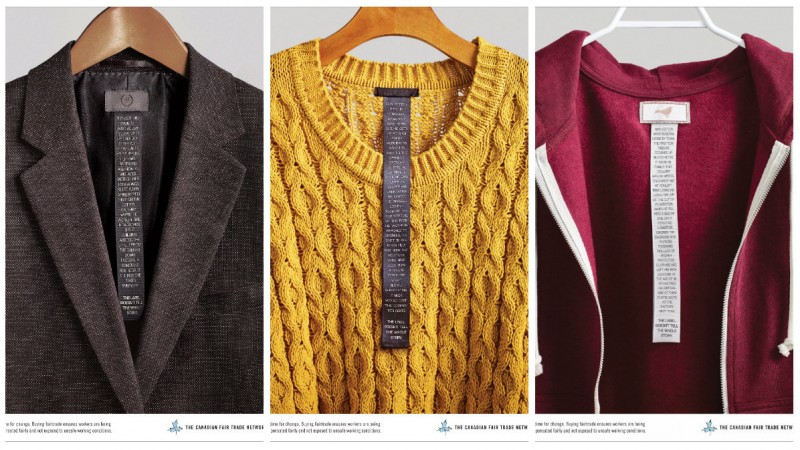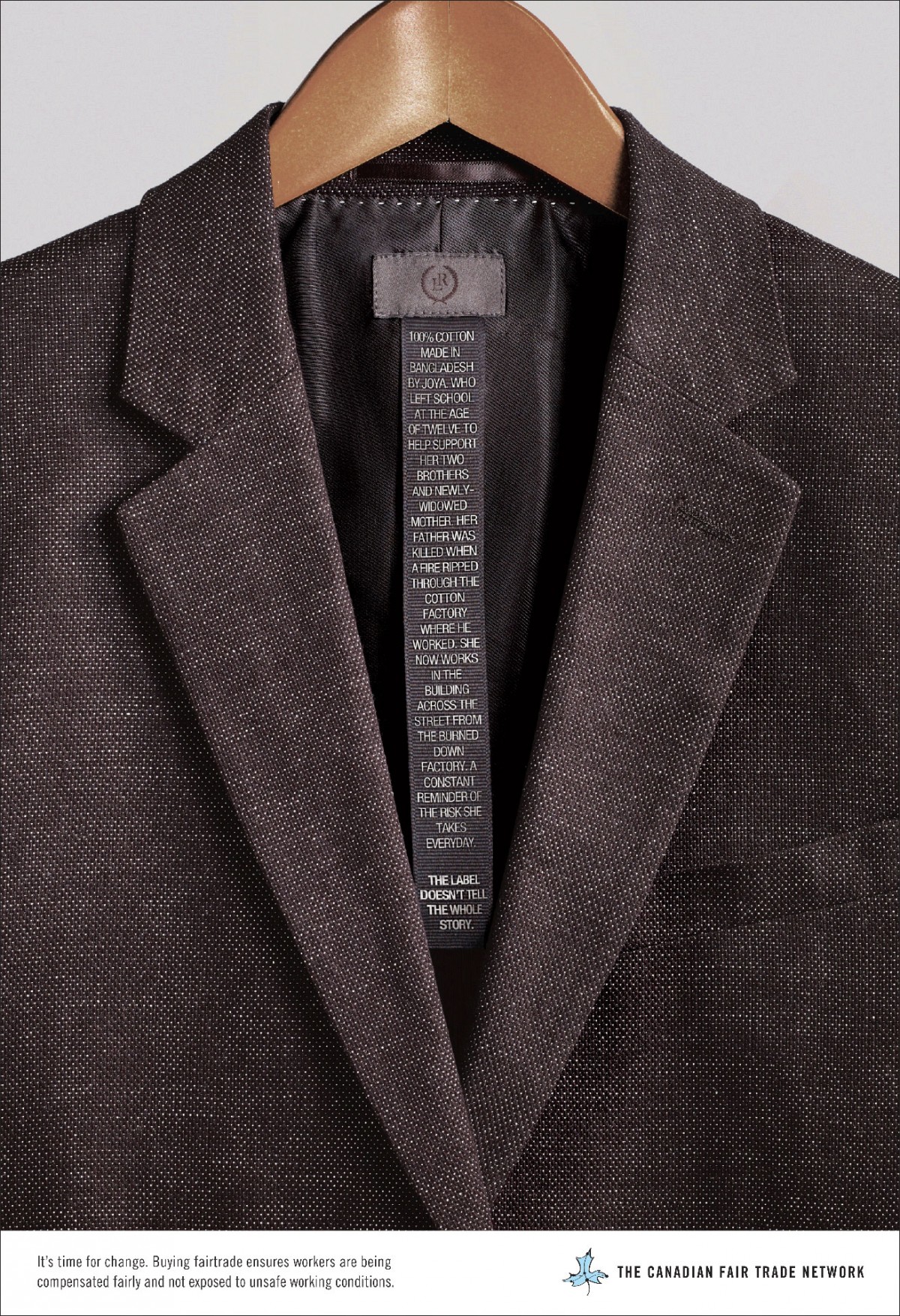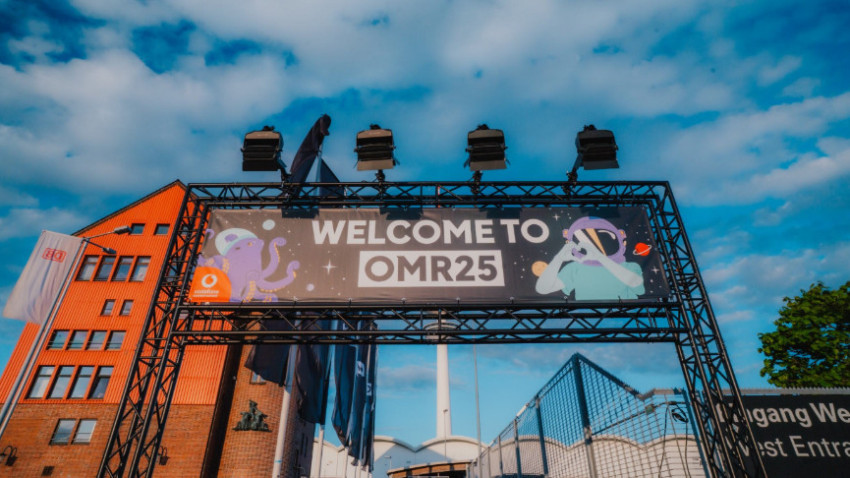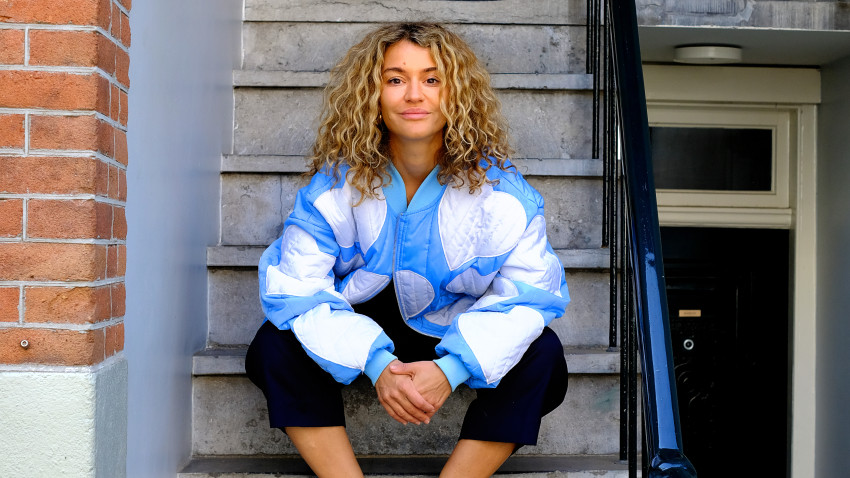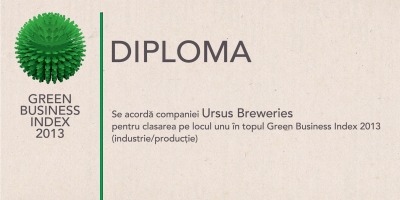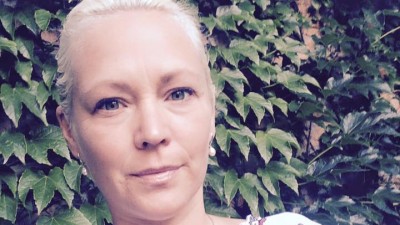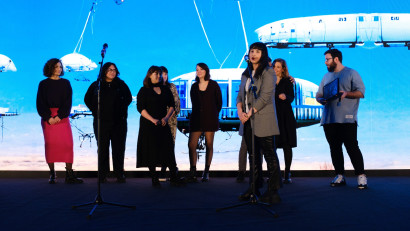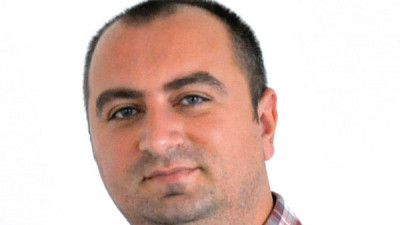Uite o intrebare filozofica: te-ai intrebat vreodata ce ti-ar spune etichetele hainelor pe care le imbraci zi de zi, daca ar putea vorbi? In afara de tara indepartata in care au fost cusute sau asamblate, de modalitatea de curatare sau compozitia materialului? Ti-ai imaginat vreodata prin ce a trecut un sacou ca sa ajunga un sacou? Sau, si mai important, prin ce a trecut muncitorul care a facut sacoul ca sa il faca? Sa ducem firul o idee mai departe si sa ne gandim prin ce ar trebui sa treaca un lucrator ca sa ajunga om.
Tocmai asta s-au gandit cei de la Canadian Fair Trade Network sa ne dezvaluie prin campania The label doesn't tell the whole story, realizata de agentia Rethink Canada. Pe langa obisnuitele platitudini, cele trei print-uri spun povestea oamenilor lui Tejan, Joya si Behnly, trei lucratori in fabrici din Sierra Leone, Bangladesh, respectiv Cambodgia care platesc un pret mai mare decat putinii bani pe care ii castiga zilnic.
Cititi-le povestile si intrebati-va zilnic ce povesti ar putea ascunde toate etichetele noastre imaculate:
100% cotton. Made in Sierra Leone by Tejan. The first few times he coughed up blood he hid it from his family. They couldn't afford medical treatment and he couldn't risk losing his long-time job at the cotton plantation. When he fell into a seizure one day it could no longer be ignored. The diagnosis was pesticide poisoning. The lack of proper protective clothing has left him with leukemia at the age of 34. He has two daughters. One of them starts work at the factory next year. The label doesn't tell the whole story.
100% cotton. Made in Bangladesh by Joya who left school at the age of twelve to help support her two brothers and newly widowed mother. Her father was killed when a fire ripped through the cotton factory where he works. She now works in the building across the street from the burned down factory. A constant reminder of the risk she takes everyday. The label doesn't tell the whole story.
100% cotton. Made in Cambodia by Behnly, nine years old. He gets up at 5:00 am every morning to make his way to the garment factory where he works. It will be dark when he arrives and dark when he leaves. He dresses lightly because the temperature in the room he works reaches 30 degrees. The dust in the room fills his nose and mouth. He will make less than a dollar, for a day spent slowly suffocating. A mask would cost the company ten cents. The label doesn't tell the whole story.

